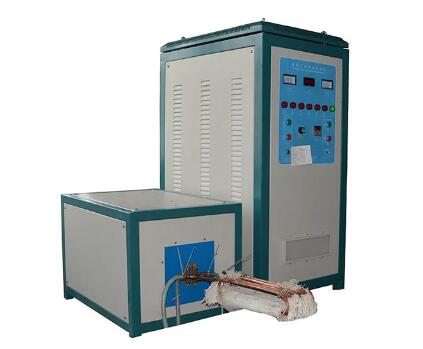How Does an Induction Brazing Machine Work?
Induction brazing machines have revolutionized the brazing process, offering efficient, precise, and reliable heating capabilities. Understanding how these machines work is essential for those interested in the brazing industry or seeking to implement induction brazing in their manufacturing processes. In this article, we will delve into the working principles of an induction brazing machine, explaining the process, components, and advantages associated with this advanced heating technique.
The Basics of Induction Heating:
To understand how an induction brazing machine operates, it is important to grasp the fundamentals of induction heating. Here are the key aspects:
a. Electromagnetic Induction: Induction heating relies on the principle of electromagnetic induction. An alternating current (AC) is passed through a coil, generating an oscillating magnetic field.
b. Eddy Currents: When a conductive material is placed within the oscillating magnetic field, it induces eddy currents within the material. These eddy currents create resistive heating, resulting in localized and controlled heat generation.
Components of an Induction Brazing Machine:
An induction brazing machine consists of several essential components that work together to deliver precise and efficient heating:
a. Power Supply: The power supply is the heart of the induction Heating brazing machine. It converts electrical energy from the mains into high-frequency alternating current (AC) required for induction heating.

b. Induction Coil: The induction coil, also known as the work coil or heating coil, is responsible for generating the magnetic field that induces eddy currents in the workpiece. The shape and configuration of the coil determine the heating pattern.
c. Cooling System: To manage the heat generated during the induction heating process, an efficient cooling system is integrated into the machine. It helps maintain optimal operating temperatures and prevents overheating of components.
d. Control Unit: The control unit regulates various parameters of the induction brazing process, such as heating time, power level, and frequency. It ensures precise control and monitoring of the heating process.
The Induction Brazing Process:
The induction brazing process involves the following steps:
a. Preparation: The surfaces to be brazed are cleaned and prepped to ensure proper bonding. Flux may be applied to promote wetting and capillary action.
b. Workpiece Placement: The workpiece, along with the brazing filler material, is positioned within the induction coil. The coil is carefully aligned to achieve the desired heating pattern.
c. Power Supply Activation: The power supply is activated, delivering high-frequency alternating current to the induction coil. The coil generates a rapidly changing magnetic field, inducing eddy currents within the workpiece.
d. Heat Generation: The eddy currents within the workpiece create resistive heating, causing the filler material to melt and flow between the joint surfaces, forming a strong bond.
e. Cooling and Solidification: Once the brazing process is complete, the power supply is deactivated, and the workpiece is allowed to cool and solidify. Proper cooling rates are crucial for achieving desired mechanical properties.
Advantages of Induction Brazing:
Induction brazing offers numerous advantages over traditional brazing methods:
a. Precise and Controlled Heating: Induction heating provides precise and localized heat, minimizing the risk of overheating or distortion of surrounding areas.
b. Fast and Efficient: Induction brazing achieves rapid heating rates, resulting in shorter process times, increased productivity, and energy efficiency.
c. Repeatable and Consistent Results: With precise control over heating parameters, induction brazing ensures consistent results, leading to high-quality and reliable brazed joints.
d. Clean and Environmentally Friendly: Induction brazing eliminates the need for open flames or torches, reducing the risk of operator exposure to hazardous fumes. It also produces minimal or no flux residues, contributing to a cleaner working environment.
Conclusion:
An induction brazing machine utilizes electromagnetic induction principles to deliver precise, efficient, and controlled heat for the brazing process. By understanding the basic working principles, components, and advantages of these machines, manufacturers can make informed decisions about implementing induction brazing in their operations. Induction brazing offers fast, repeatable, and high-quality results, making it a preferred choice for various applications across industries. With the ability to provide precise heating and minimal operator risk, induction brazing machines have revolutionized the way brazing is performed, enhancing productivity and ensuring consistent and reliable brazed joints.

